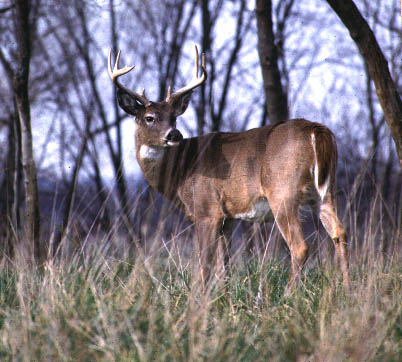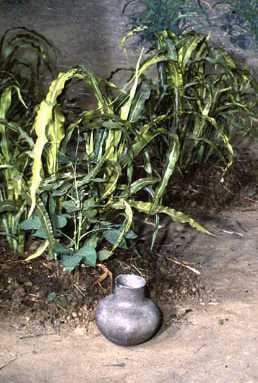
White-tailed deer.
|
Harvesting of wild and cultivated plants, hunting, fishing, and trapping all
had to be coordinated to maximize yeilds. Details of how these food-getting
activities were scheduled is difficult to say, but it seems likely that every
household member had numerous tasks to preform throughout the fall. Foods had
to be hunted, gathered and harvested, then processed, and finally stored for
use through the coming winter and spring. Social customs and ceremonies
probably required some amount of surplus be given to local community members of
high status as tribute, or as payment for their services in officiating
ceremonies, community feasting, or for delivering tribute to the regional elite
at the local mound center.
|
 Maize field with water bottle, Illinois State Museum.
Maize field with water bottle, Illinois State Museum.